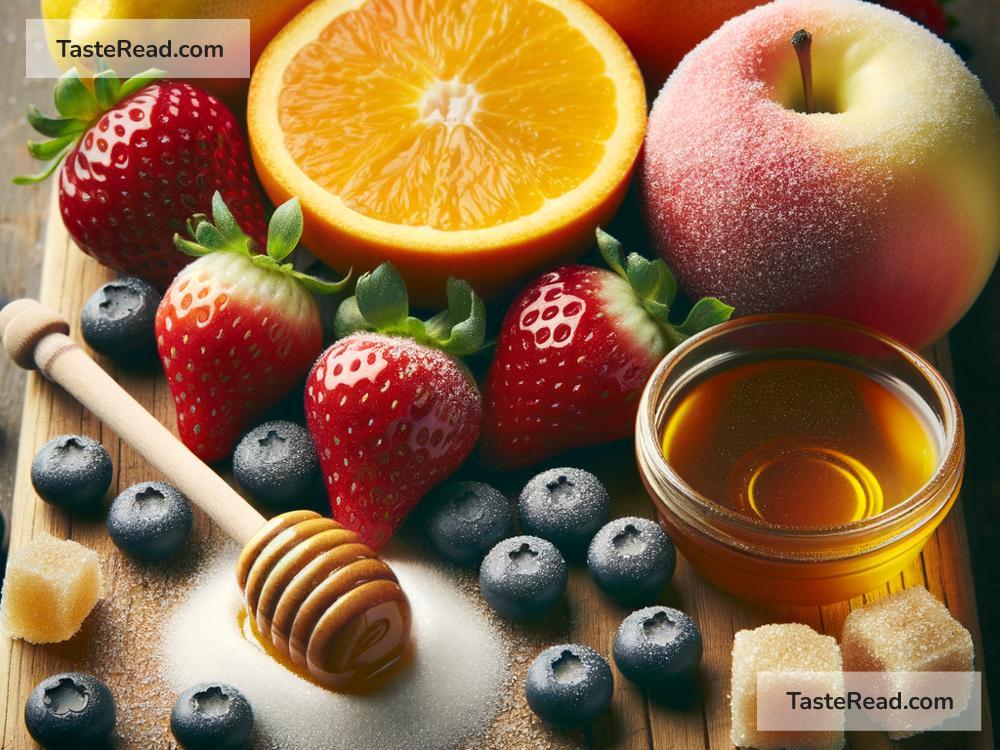How Fruit Acidity Interacts with Sweetness for Balanced Flavors
Have you ever bitten into a juicy piece of fruit and been delighted by the perfect balance between sweet and tart flavors? That harmony is what keeps us coming back for more, whether it’s the refreshing taste of an orange or the bright pop of a strawberry. But have you ever wondered why some fruits taste sweet while others have a sour punch? The secret lies in the interaction between acidity and sweetness.
Understanding how acidity and sweetness work together to create balanced flavors can help you appreciate food in a whole new way. It can also help aspiring cooks and bakers create tastier meals. Let’s explore the science behind fruity flavors and how these elements complement one another.
What Is Acidity?
Acidity refers to how “sharp” or “tart” a fruit tastes. Sour flavors in fruit come from acids, mainly citric acid, malic acid, and tartaric acid. Each type of acid adds unique qualities to a fruit’s taste. For example, lemons and limes are packed with citric acid, which gives them their bold tangy flavor. Apples are rich in malic acid, which contributes to their crisp, slightly sour notes.
Acidity also does more than affect taste—it influences how we perceive other flavors. Foods with high acidity feel refreshing, energizing, and even cleansing to the palate. Anyone who has enjoyed a glass of cold lemonade on a hot day has experienced this firsthand.
What Is Sweetness?
Sweetness comes from sugars in fruit, mainly fructose and glucose. Sweet fruits like mangoes, bananas, and figs have higher sugar levels than more tart fruits. Sugar isn’t just pleasant on the tongue—it balances the sharpness of acidity, making fruit flavors more complex and enjoyable.
Sweetness also appeals to our biology. Humans naturally crave sweet foods because sugars provide energy. That craving is why fruits are so satisfying and why sugary snacks are hard to resist. But don’t let sweetness fool you—it’s best enjoyed when paired with something that tones it down, like acidity.
The Beautiful Balance: Acidity and Sweetness Together
When acidity and sweetness are well-balanced, they create a deeper, more interesting flavor profile. Too much acidity, and the fruit will make you pucker up—imagine biting into an unripe lemon. Too much sweetness, and the fruit can taste flat or overly sugary, like overly ripe melon. But when acidity and sweetness are in harmony, the result is magical.
Take a bite of a ripe pineapple, for example. Pineapples are naturally sweet, but they also contain a good amount of acidity. That tartness prevents the sweetness from becoming overwhelming, creating a flavor that’s bright, bold, and delicious. Similarly, strawberries balance their sweetness with gentle acidity, making them one of the most universally loved fruits.
Balance isn’t just important in whole fruits—it plays a major role in cooking and baking too. If you’ve ever made a dessert with fruit, you’ve likely tried to adjust the sweetness or acidity to get the right flavor. For example, adding a touch of lemon juice to a pie filling can brighten up overly sweet strawberries, while adding sugar can soften the tart taste of rhubarb.
Why Does Balance Matter?
Our taste buds are sensitive to extremes. If a fruit is too acidic, we may find it unpleasantly sour. If it’s too sweet, it can become overwhelming or cloying. Finding the balance between acidity and sweetness is the key to creating flavors that are enjoyable and satisfying.
This balance is also important in preparing dishes and drinks. Chefs, bakers, and mixologists often combine sweet and acidic ingredients to build layers of flavor. Lemon zest can make a cake more flavorful, while a squeeze of lime can brighten up a cocktail. Without acidity to cut through the sweetness, many dishes could taste one-note or overly heavy.
Examples of Balanced Fruits
Some fruits are naturally masters of balance. Here are a few examples:
- Mango: Mangoes are naturally sweet, but a slight tangy edge prevents them from tasting overly sugary.
- Apple: Apples vary in sweetness and acidity depending on the variety. Tart Granny Smiths add acidity to desserts, while sweeter Honeycrisp apples are perfect for snacking.
- Orange: Oranges strike a beautiful balance, with refreshing acidity that’s perfectly complemented by their sweetness.
- Raspberry: Raspberries are packed with tangy acidity but have just enough sweetness to keep them palatable.
- Cherry: Some cherries lean sweet, while others have a tart punch that keeps them lively and exciting.
Tips for Creating Balance at Home
Here are some simple tips for mastering acidity and sweetness:
- If a dish tastes too sweet, add a dash of lemon juice, lime juice, or vinegar to bring in acidity.
- If a fruit or dessert tastes too sour, sprinkle a little sugar or honey to mellow it out.
- In smoothies, use naturally tart fruits like berries or citrus for acidity and balance them with sweeter fruits like bananas or mangoes.
- Don’t be afraid to experiment! Taste and adjust as you go.
Conclusion
Acidity and sweetness are the yin and yang of fruit flavors. They’re opposite yet complementary, working together to create the mouthwatering taste we love. When balanced well, they create flavors that are refreshing, complex, and unforgettable.
So, the next time you bite into your favorite fruit, take a moment to appreciate how acidity and sweetness are working in harmony. And if you’re cooking or baking, remember that finding the right balance is the key to unlocking incredible flavors. Happy tasting!


